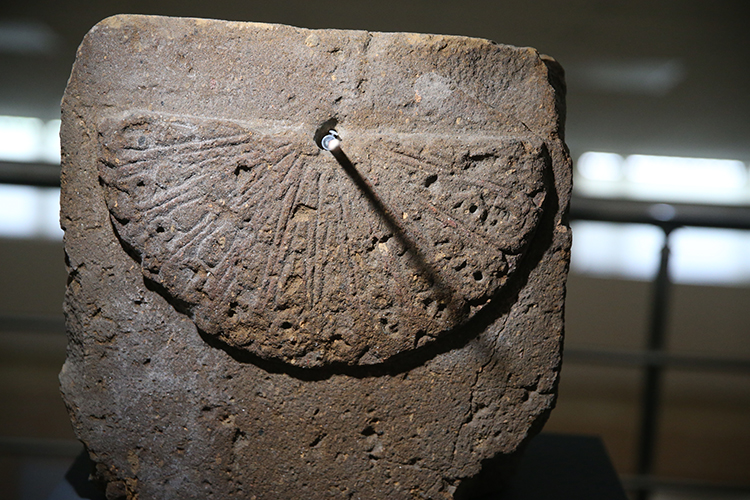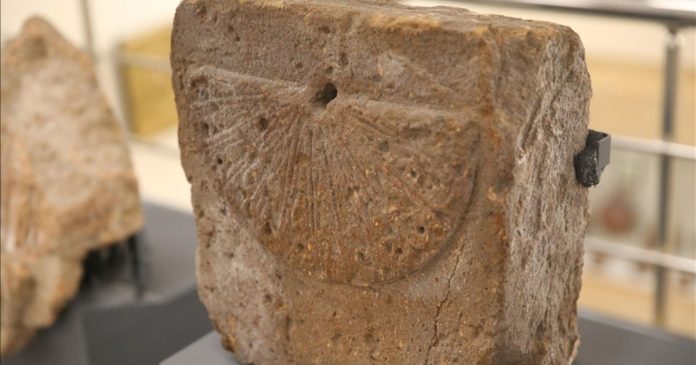KARS, TÜRKİYE – Researchers have unveiled a significant archaeological discovery from the ancient city of Ani.A sundial, estimated to be approximately 1000 years old, unearthed during excavations, is now on display, attracting interest from both domestic and international visitors.
Discovery in the Bath Complex
Archaeologists discovered the sundial in 2021 during excavations in the large bath complex at the Ani Archaeological Site. After meticulous conservation and study, the team prepared the artifact for public exhibition.

Technical Details and Historical Context
According to Hakim Aslan, Acting Director of the Kars Archaeology and Ethnography Museum, the sundial holds particular importance. “The sundial we found in the bath excavation at Ani is significant for us,” Aslan stated. It features a semicircular form divided into 12 segments. A central metal rod (gnomon) casts a shadow onto these segments to indicate the time as the sun moves.
Aslan explained the evolution of sundials, noting that while examples exist from very early periods, they gained momentum especially during the Roman and Hellenistic eras.However, developments related to sundials during the Medieval period do not appear to have advanced significantly; in fact, they seem to have lagged behind the achievements of the Hellenistic era.” This makes the well-crafted Ani sundial, dating to the medieval period around the 11th century AD, a notable find.
Ani: A Crossroads of Civilizations
The significance of the sundial is further amplified by its location. The ancient city of Ani, a UNESCO World Heritage Site, is renowned for its exceptional historical and cultural value. Established over 85 hectares, Ani served as a home to 23 distinct civilizations throughout its history. Its strategic position as the “first gateway from the Caucasus to Anatolia” endowed it with unique importance.
The cityscape, remarkably preserved in parts, includes walls, mosques, cathedrals, palaces, churches, monasteries, bathhouses, bridges, and partially ruined covered passageways. Ani also boasts nearly 1,500 underground structures, which once housed a significant portion of its population and continue to shed light on past ways of life. Ongoing excavations regularly uncover new insights into this multifaceted ancient metropolis.
Exhibition for the Public
The millennium-old sundial made its public debut approximately two weeks ago as part of the Ministry of Culture and Tourism’s “100+2 Temporary Museum Exhibitions Project.” This initiative showcases artifacts recovered from excavations at Ani. The sundial is now a focal point of interest for visitors at the Kars Archaeology and Ethnography Museum.
“After 1000 years,” Aslan remarked, “this sundial, dating back approximately a millennium, has been brought to light through archaeological scientific excavations and has now begun to be exhibited for visitors.” Its display offers a tangible connection to the timekeeping methods and daily life within the medieval city of Ani.

